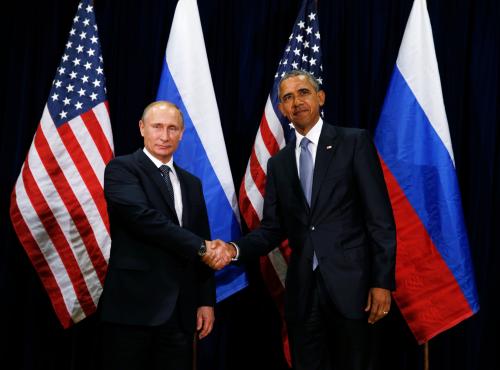Arms control has figured on the agenda between Washington and Moscow since the 1960s. Successive U.S. administrations have pursued negotiated arms control arrangements to limit and reduce the number of Soviet/Russian nuclear weapons, to enhance strategic stability, to increase transparency and predictability, to reduce costs of nuclear forces, and to bolster America’s non-proliferation credentials.
The next president will take office in January 2017, when the overall U.S.-Russia relationship is at its lowest point since the end of the Cold War and prospects for a resumed U.S.-Russia dialogue on nuclear arms control appear bleak. But while there are few grounds for optimism, the next administration should not exclude the possibility that Moscow might be prepared to reengage.
There are a number of questions that the next administration should consider, including:
- Does the United States need to continue to maintain a triad of submarine-launched ballistic missiles, intercontinental ballistic missiles, and bombers?
- Should the strategic force modernization program and numbers deemed necessary by the Obama administration be reaffirmed or adjusted?
- Does the new nuclear-armed air-launched cruise missile provide a redundant capability?
- Would it make sense to adopt a policy of no first use of nuclear weapons? Or to declare that the sole purpose of U.S. nuclear weapons is to deter a nuclear attack on the United States or American allies?
- Would it want to consider proposals to de-alert the intercontinental ballistic missile force, which can be launched in a matter of minutes?
In dealing with Russia, even more questions arise, including whether and when the United States might seek to extend the 2010 New START Treaty, which expires by its terms in 2021 but can be extended for up to five years, and what sorts of nuclear arms control arrangements to seek beyond New START. There is also the critical issue of compliance with the 1987 Intermediate-range Nuclear Forces Treaty.
With these questions in mind, some next steps the new president might take are:
- Carry out a nuclear posture review to examine the requirements for U.S. nuclear forces and policy and whether current and planned nuclear forces meet those requirements, or whether the plans can be adjusted.
- Commission a study on moving to a policy in which the United States would state that the sole purpose of its nuclear weapons is to deter a nuclear attack on the United States and U.S. allies, consulting with allies on this question.
- Seek to engage Moscow in a negotiation aimed at a mutual reduction that covers all U.S. and Russian nuclear weapons—strategic and non-strategic, deployed and non-deployed.
- Indicate to Moscow that, in the context of a negotiation on further nuclear arms cuts, the United States would be prepared to present and discuss ideas to address Russian concerns on missile defense, advanced conventional strike weapons, and third-country nuclear forces.
These ideas, and others, might make it possible to bridge the gap that has emerged between the United States and Russia on arms control and related issues in recent years. If the Russian government is not prepared to engage, a stated U.S. readiness to pursue deep reductions in U.S. and Russian nuclear weapons and address related Russian concerns could serve as a powerful sign of American commitment to reduce the nuclear danger.






